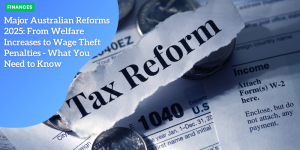Enhanced Welfare Payments Benefit Five Million Australians

Anúncios
A Boost for Millions: Understanding the Recent Welfare Payment Enhancements
Millions of Australians can breathe a sigh of relief as indexation adjustments are applied to a range of welfare benefits this month. This welcome news translates to increased financial support for a significant portion of the population, including age and disability support pensioners, carers, single parents, and individuals relying on JobSeeker payments and Commonwealth Rent Assistance.
Who Benefits from the Increased Payments?
Over 5 Million Australians to Receive Enhanced Support:
The impact of indexation is widespread, encompassing an estimated five million Australians. This includes:
- Age and Disability Support Pensioners: Over 3.3 million individuals receiving age or disability support pensions will see a significant boost to their fortnightly payments. Single pensioners will receive an additional $19.60, while couples will benefit from a combined increase of $29.40. This adjustment elevates the maximum pension rate to $1116.30 for singles and $1682.80 for couples.
- Carers and Single Parents: Carers and single parents are also included in this initiative, providing much-needed financial assistance to these vital support systems within families. Carers play an indispensable role in supporting vulnerable individuals, and single parents often shoulder the sole financial responsibility for their children. The increased payments offer a welcome recognition of their contributions and help alleviate the financial pressures they face.
- JobSeeker and Commonwealth Rent Assistance Recipients: JobSeeker payment recipients, nearly 800,000 in total, will see a welcome increase of $13.50 per fortnight. This brings the total JobSeeker payment, including the energy supplement, to $771.50. Additionally, approximately 1.4 million individuals relying on Commonwealth Rent Assistance will experience a $3.40 rise in their fortnightly payment, reaching $188.20 for single income support recipients.
Investing in Vulnerable Communities: The Financial Impact
The application of indexation is estimated to result in an additional annual expenditure of $2.2 billion by the government, translating to an increased outlay of $84.4 million every fortnight. This significant investment highlights the government’s commitment to supporting vulnerable communities facing rising living costs. The increased payments provide a critical buffer against inflation and ensure that essential needs such as food, housing, and utilities remain within reach for low-income earners and pensioners.
A Government Focused on Affordability
Social Services Minister Amanda Rishworth emphasized the importance of these adjustments: “Regular indexation ensures that payment recipients have more money in their pockets for everyday expenses, addressing inflation and cost of living pressures.” This statement underscores the government’s focus on mitigating the financial burdens faced by low-income earners and pensioners. Indexation helps to maintain the purchasing power of welfare benefits and prevents them from being eroded by inflation over time.
Looking Beyond: Adequacy of Welfare Rates
While the recent welfare payment increases offer some financial relief, concerns remain regarding the long-term adequacy of these rates in effectively combating poverty. Advocacy groups within the welfare sector continue to express anxieties about whether the current payment levels are sufficient to ensure a dignified standard of living for all recipients. They argue that rising housing costs, healthcare expenses, and the general cost of living continue to outpace the increases provided by indexation.
Conclusion: A Step Forward, But More Work Needed
The application of indexation represents a positive step towards supporting vulnerable Australians. The increased payments provide some much-needed financial breathing room for millions of individuals and families. However, ongoing discussions and potentially further adjustments to welfare rates might be necessary to ensure they continue to effectively address the challenges of poverty and maintain a fair and equitable standard of living for all Australians. It is crucial to strike a balance between ensuring the sustainability of the welfare system and providing adequate support for those who rely on it. By conducting regular reviews and considering the impact of external factors like inflation, the government can work towards achieving this balance and ensuring that everyone has the opportunity to thrive.






